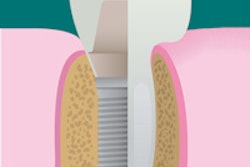
From antidepressants such as Paxil and Zoloft to anticonvulsants such as lithium, the number of psychotropic drugs being prescribed in the U.S. is growing at an alarming rate. Keeping track of them and their potential side-effects and interactions can be a challenge for any dental practice.
But a recent article in Anesthesia Progress outlines some of the most common psychotropic drug interactions a dental practice is likely to encounter (Fall 2008, Vol. 55:3, pp. 89-99). There are currently more than 100 psychotropic drugs regularly prescribed for depression, anxiety, bipolar disorder, and related illnesses. Fortunately, dentists don't have to know everything about each drug in order to avoid serious problems, according to author Daniel E. Becker, D.D.S., associate director of education in the general dental practice residency at Miami Valley Hospital in Dayton, OH.
"The interactions are not based on the individual drug, but on the category the drug belongs to," he said.
Antidepressants
“An everyday problem in dentistry is trying to explain why a pain medication is not effective.”
— Daniel E. Becker, D.D.S.
Of greater concern are the side effects and drug interactions of the various antidepressants now on the market. These include monoamine oxidase inhibitors (MAOIs) such as Nardil, tricyclic antidepressants (TCAs) such as Elavil, selective serotonin reuptake inhibitors (SSRIs) such as Paxil or Zoloft, and serotonin-norepinephrine reuptake inhibitors (SNRIs) such as Effexor, Pristiq, and Cymbalta.
Antidepressants such as MAOIs that elevate serotonin levels are a concern if taken along with other medications that enhance serotonin levels, which can lead to hyperpyrexia, confusion, agitation, and neuromuscular irritability, Dr. Becker noted.
This so-called "serotonin syndrome" has even been observed with St. John's wort, an over-the-counter herbal antidepressant, he added.
More important, however, are the potential interactions between benzodiazepines and SSRIs: SSRIs inhibit oxidation of benzodiazepines, which can lead to elevated levels of these drugs. Dr. Becker recommends using benzodiazepines such as lorazepam and temazepam that are not oxidized as an alternative.
In addition, SSRIs inhibit several families of hepatic enzymes, which may delay the clearance of some pain medications, including codeine, hydrocodone, and oxycodone. In particular, patients medicated with Prozac and Paxil may not experience adequate pain relief from codeine or its derivatives.
"An everyday problem in dentistry is trying to explain why a pain medication is not effective," Dr. Becker said. "SSRIs, which are the most common, can inhibit narcotics such as Vicodin and oxycodone from becoming active, so the patient doesn't experience adequate pain relief."
Dr. Becker also emphasized that TCAs present the greatest concern for potential interactions because they can disrupt normal functioning of the heart (anticholinergic effects).
"Epinephrine and levonordefrin are not contraindicated in these patients, but they should be used cautiously," he noted. He recommends that heart rate and blood pressure be reassessed following each 20-40 µg dose of epinephrine administered.
With regard to SNRIs, injecting epinephrine into a patient taking an SNRI can have an exaggerated -- and unpleasant -- effect, noted Steven Ganzberg, D.M.D., chief of dental anesthesiology and clinical professor at Ohio State University.
"Instead of being reabsorbed by one of the nerves, the reuptake process is blocked, so the patient may experience tachycardia or increased blood pressure for a longer duration," he cautioned.
Antipsychotics and anticonvulsants
With antipsychotic drugs such as Haldol, Thorazine, and Clozaril, Dr. Becker noted that while there are no well-established drug interactions associated with these medications and drugs conventionally used in dentistry, some consideration should be given to the use of vasopressors in local anesthetic solutions and antihistamines and antiemetics used in sedation regimens.
"Most antipsychotic agents have modest alpha-blocking actions that may counter any increase in systemic vascular resistance following systemic absorption of vasopressors," he wrote.
Patients taking anticonvulsants -- which are increasingly prescribed for bipolar disorder -- can also develop a tolerance for the drugs' sedative properties, which should be taken into account when administering other sedatives. In addition, many anticonvulsants alter platelet production, which can affect blood clotting.
"It used to be that antidepressants would be used for the depressive component, but then people would become very manic and would have to be prescribed an 'antimanic' such as lithium," Dr. Ganzberg said. "Now we are seeing more of these patients taking anticonvulsant drugs such as Depakote and Neurontin, which can act as mood stabilizers."
For postoperative pain, patients taking lithium should limit their use of NSAIDs such as ibuprofen to two to three days because lithium excretion is reduced and toxic blood levels can develop, he added.
"If a patient on lithium has pain for several days after a root canal, it is better to use Tylenol or Tylenol with narcotics instead," he concluded.



















